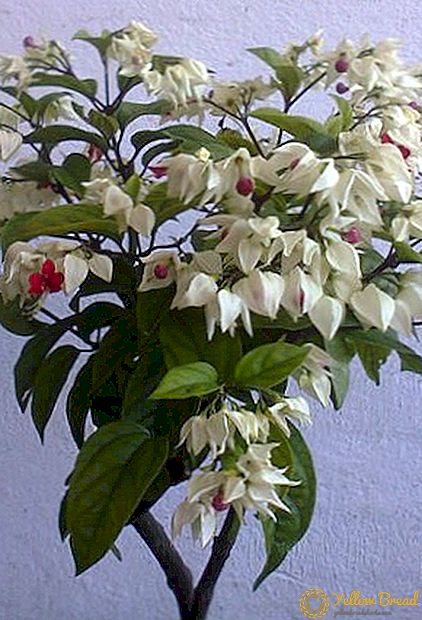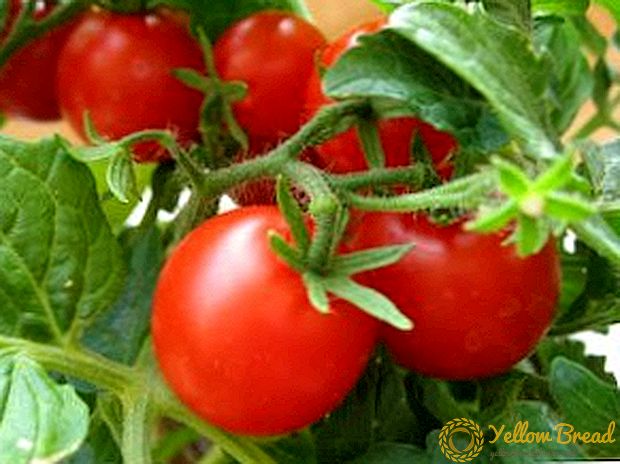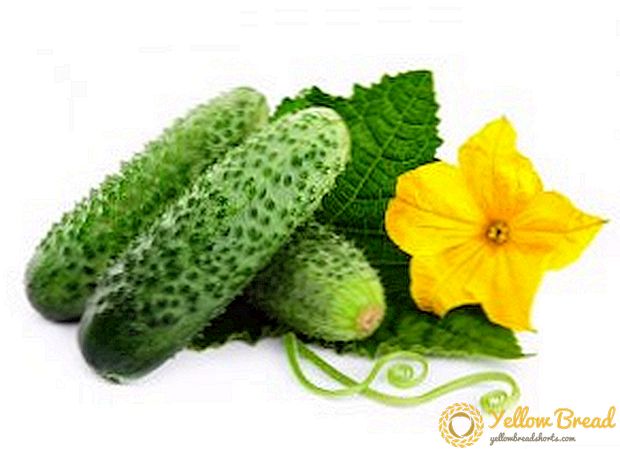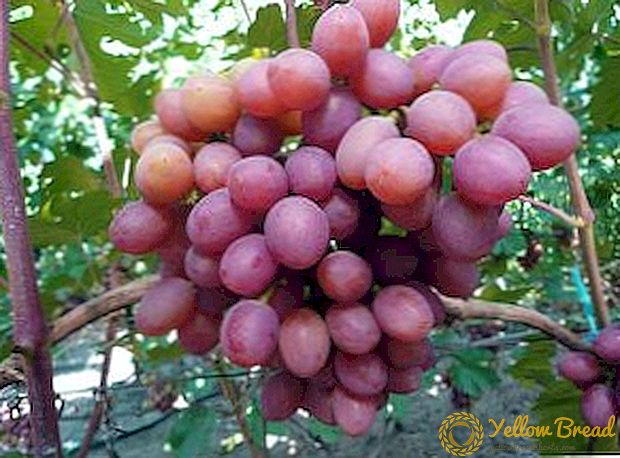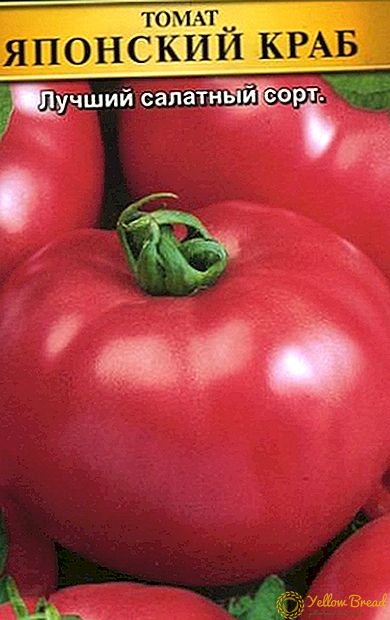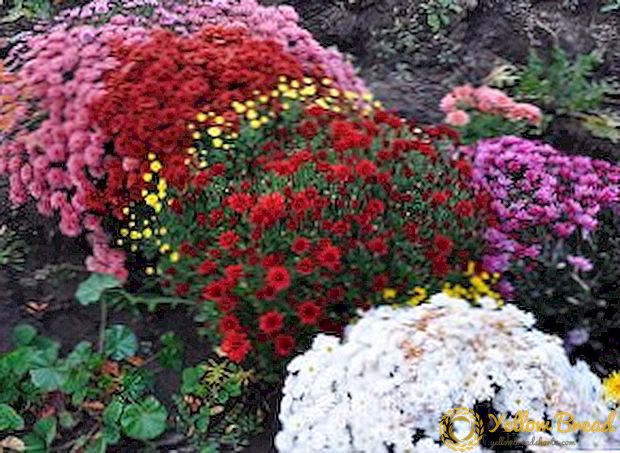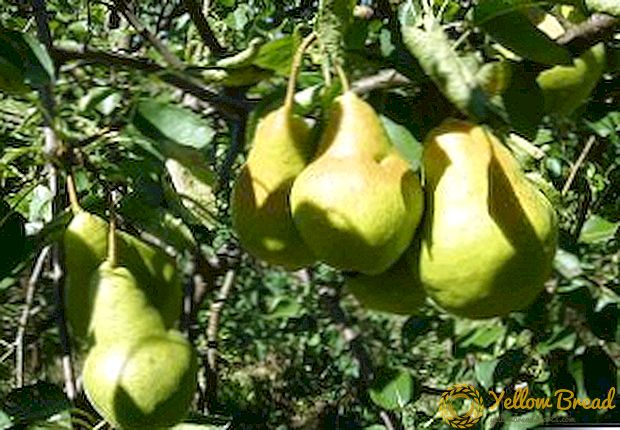 Fruit "Honey" pears are fragrant, juicy and have a honey aftertaste. Trees take up little space in the garden and are unpretentious in maintenance. Even these facts are enough to interest gardeners in this variety of pears.
Fruit "Honey" pears are fragrant, juicy and have a honey aftertaste. Trees take up little space in the garden and are unpretentious in maintenance. Even these facts are enough to interest gardeners in this variety of pears.
- Breeding history and region of breeding
- Characteristics and features
- Wood
- Fruits
- How to choose seedlings when buying
- Choosing a place on the site
- Preparatory work
- Step-by-step process of planting seedlings
- Seasonal care features
- Soil care
- Top dressing
- Preventive treatment
- Pruning
- Protection against cold and rodents
Breeding history and region of breeding
In 1964 in the Crimea, a group of scientists managed to bring a new variety of pears - "Honey". It is also called "Crimean Honey". It is a seedling from the free pollination of the French Bere Bosc variety.

Characteristics and features
This pear variety is artificially developed and has a number of special characteristics.
Wood
Trees "Crimean honey" quite compact, no more than two meters high. The fruitful period begins with the third year of disembarkation. The variety is self-infertile, for pollination, two trees are needed nearby.
The ideal partner will be a variety that blooms at the same time as Honey. The distance between the “Honey” pear and pollinating trees should be about three meters. The life span of a variety is about fifty years.
Fruits
Fruits have a green-yellow shade with gray subcutaneous spots, the color of the integument is a brown blush. Fruits are large (weight from 300 to 500 g), are not equal. The stem of the honey pear is short, slightly curved. Ripe pears from the branches are not showered. Harvesting fruits by hand ensures that they will all be intact and not damaged by strikes on the ground.

How to choose seedlings when buying
The optimum age of trees for planting is 1-2 years. The older the seedling, the harder it transfers the transplant and worse it adapts to the new place. You can determine the age of the seedling visually. The height of an annual sapling is about 1 meter; there are no side shoots. The trunk of the tree from the middle has buds. The length of the root system is about 20 cm.
Biennial plant up to one and a half meters.It has from three to five shoots, roots up to 30 cm long. Regardless of the age, the seedling should be covered with a smooth bark without damage. Roots must be clean without blisters and growths.
Choosing a place on the site
For planting seedlings suitable south side of the site. These fruits should get enough sun. It is optimal if the trees from the north are protected from the cold wind by a fence or buildings. Sandy and clay soils are not suitable for planting pears. 
Preparatory work
Planting pear "Honey" is possible twice a year:
- in the fall: in late August - early September, while the weather is dry and warm. There is enough time for cold weather to make the tree stronger and overwinter;
- in the spring: at the end of April - the beginning of May, when the frosts had already stopped, and the earth warmed up.
Step-by-step process of planting seedlings
- First of all, two weeks before landing, it is necessary to prepare a pit. It is dug up to 80 cm in width and from 80 cm to a meter in depth, depending on the branching of the roots. About a third of the excavated soil should be folded to the side, it will be needed for further planting.
- Next, the bottom of the pit should be filled with humus and a layer of sand. Roots of a seedling should be leveled in a hole and covered with earth until a mound is formed. The result is air and moisture permeable soil.
- Then you need to dig a column and bind to it a pear seedling. This should be done with a cloth or wrap, so as not to injure the tree.
- After these actions, pour a bump of water over the mound.
Seasonal care features
To pear "Honey" gave a bountiful harvest, should follow simple tips on care during the year.
Soil care
A young, unfertile tree requires regular watering. If the soil is dry, then you need to water once a week, using at least 10 liters of water for each pear.
Fruit tree is watered only twice a year - before flowering and after. For irrigation, about 10 cm deep grooves are dug around the trunk, water is poured into them. To preserve moisture, the watering place should be covered with straw, peat or other organic matter. Land near the tree must be regularly loosened.In spring and autumn, they dig up the soil around the trunk.
Top dressing
Top dressing of a tree is made four times a year:
- before flowering;
- during flowering;
- after flowering;
- in the middle of autumn.
Mineral fertilizers have different properties - nitrogen-containing fertilizers are used to enhance growth processes. Superphosphate and potassium sulfate help better seedling development and increase frost resistance.
Preventive treatment
For the prevention of diseases such as scab, rust, black cancer, and from pests - saplings, pear mites, slimy sawflies, it is enough to burn fallen leaves in autumn and dig the ground around the tree 15 cm deep. In late autumn, tree trunks are whitewashed to prevent the parasites from hibernating.
Pruning
Pruning a pear is important for its development, as it improves the illumination of the crown, which increases productivity. The first pruning is carried out one year after disembarkation. In late March, the barrel is shortened by a quarter. The tallest side branches shorten by a third.The center conductor is left 20 cm longer than the tallest side branch.

A year later, choose 2-3 tall shoots and at a distance of about half a meter from the first. These branches align with the first row. The rest of the shoots must be reduced to the ring, that is, cut under the trunk, leaving no hemp. The trunk is cut to 20 cm.
In the 4th year of life, the pear leaves one branch 40-50 cm above the second row. The undergrowth between cycles of branches is shortened to the ring. The central trunk is trimmed to the level of the most extreme branch.
In the summer, to prevent the growth of branches in length, they are cut to solidified tissue. This pruning is called pinning and is carried out throughout the summer with a regularity of ten days. From late August to mid-September, pruned dry and pest-damaged shoots.
Protection against cold and rodents
Pears "Honey" differ in winter hardiness, but young trees should be protected from severe frosts. To protect the fruit from frost, they are wrapped in paper or cloth. Also, the trunk is added dropwise with a layer of earth about 20 cm, and then covered with a thick layer of snow.

- pleasant taste and aroma;
- high yield;
- variability of variety;
- small dimensions of trees;
- the possibility of landing in the fall or spring;
- long shelf life and fruit transportability.
- difference in size of fruits with a bountiful harvest;
- reduced frost resistance at high yields.

Summing up everything written, it is necessary to recognize that there are many more advantages to this variety than disadvantages. Crimean Honey will decorate any garden and will delight you with juicy, honeyed fruits.

